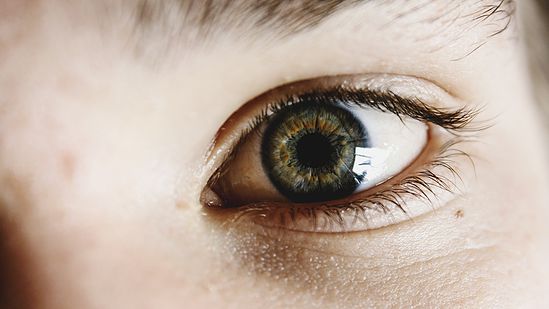You've likely heard of glaucoma, but are you aware of symptoms, treatments, and what it actually causes? Well it's Glaucoma Awareness Month, and we're here to help.

What is glaucoma?
Glaucoma is an eye disease that causes damage to the optic nerve, which eventually leads to blindness. This damage is typically caused by an increase in internal eye pressure (IOP). There are multiple types of glaucoma, with different dangers for patients based on age, sex and race. An optometrist can help identify which types you might be most at risk for. One percent of Americans have glaucoma, and while this may seem like a small number, it means that 3 million or more people in the US have a preventable condition which will cause blindness if left untreated.
The first step toward prevention is awareness, so keep reading!
Symptoms of Glaucoma
Unfortunately there are more non-symptoms than actual symptoms; glaucoma has garnered the nickname “silent thief of the night,” because you often don’t know what’s happened until it is too late. However, the three major symptoms of glaucoma that can be recognized are:
-
Loss of peripheral vision
-
Decrease in contrast sensitivity
-
Eye Pain (for acute attacks)
Treatment of Glaucoma
Glaucoma treatments include medication and surgery. In the US we typically start with medications and then go from there. Treatments include:
-
Eyedrops to decrease fluid production and increase fluid outflow
-
Pills to decrease fluid production and increase fluid outflow
-
Surgery to increase outflow of fluid to lower pressure
-
Surgery to implant a stent which increases outflow
-
Laser surgery
Screening for Glaucoma
A comprehensive eye exam will evaluate whether or not you are at risk for glaucoma. Risk factors include family history, intraocular pressure, and optic nerve evaluation. If the dotor finds one or more of these factors to be troubling, this is a red flag that means you are more at risk for glaucoma than others.
The most important test is the eye pressure check; this is done with a tonometer. The tonometer can be a probe which touches the surface of the eye or a ‘non-contact’ tonometer which uses a gentle puff of air to read the internal eye pressure (the "puff test" - dreaded by many, but now you know why it's important)..jpg?width=644&height=483&name=_93A0455%20(1).jpg)
If you have relatives with glaucoma, that makes you more susceptible to contracting the disease. Case history is also reviewed because race, age, and gender will also change the level of risk in patients. Did you know that normal pressure levels should be between 10-21mmHg? Did you know an Asian patient with a pressure of 22 mmHg is much more serious than if an African American patient has that same measure? It’s unlikely that you do, but your optometrist does know about all those little caveats - so be sure to visit him/her regularly.
The last evaluation for glaucoma is of the optic nerve. This nerve connects the brain and the eye and is the part that gets damaged by high eye pressure. You ideally want a normal looking, appropriate sized nerve in each eye, with no asymmetry. Doctors will evaluate the cup to disc ratio, but we like to think of it in terms of teacups and cookies. If the teacup is too big, it will push all the cookies off the saucer. We want a regular sized teacup so that we can fit enough cookies on the saucer.
Special Tests for Glaucoma
There are multiple special tests for glaucoma patients: standard of care, and emerging technology that may be quite beneficial.
Standard of Care
-
Visual Field Testing: This instrument measures the function of your peripheral vision. As structures are damaged, functionality is lost. This test is repeated annually to detect changes over time.
-
OCT (Optical Coherence Tomography): This instrument will measure the nerve fiber layer of your optic nerve. A thick layer is a healthy layer; thinning is bad.
-
Pachymetry: An instrument that measures the thickness of the cornea; thickness will affect pressure and the IOP must be recalculated based on tissue thickness.
-
Gonioscopy: This special lens helps to evaluate the angle, or drainage pipes, inside the eye which release fluid.
Emerging Technology
-
Visual Evoked Potential (VEP): This newer technology helps to evaluate the signal strength from the eye to the brain. It is used as a baseline in glaucoma to record signal strength.
-
Anterior Segment OCT: This is a more accurate method than gonioscopy to evaluate the exact angle, or drainage pipes, for suspects with narrow angle glaucoma.
Remember: many Glaucoma symptoms are not outwardly apparent, which makes regular eye exams all the more important. Glaucoma-related blindness CAN be prevented if the disease is caught early enough.
That's all the major stuff (and then some) you should know about glaucoma. If you have questions, please reach out to us! In the meantime, you might enjoy our eBook, 6 Eye-Opening Facts That Will Have You Booking an Eye Exam.



